 On October 27th, 1902, the steamer SS Ventnor left Wellington, New Zealand, carrying the mortal remains of 499 Chinese miners. It was taking them to Hong Kong where they would be transported to China’s southern Guangdong province, the birthplace of the 499 dead, so the remains could be reburied in their native soil in accordance with Chinese custom. New Zealand had recruited Chinese labourers to extract gold from mines that Europeans had already worked to near exhaustion, and despite the passage of draconian exclusion laws, the Chinese community grew. Choie Sew Hoy, a wealthy Dunedin merchant and leader of the Cheong Sing Tong, arranged for the repatriation of the bodies and when he died suddenly a year before the ship’s departure, his remains joined the others on board the SS Ventnor.
On October 27th, 1902, the steamer SS Ventnor left Wellington, New Zealand, carrying the mortal remains of 499 Chinese miners. It was taking them to Hong Kong where they would be transported to China’s southern Guangdong province, the birthplace of the 499 dead, so the remains could be reburied in their native soil in accordance with Chinese custom. New Zealand had recruited Chinese labourers to extract gold from mines that Europeans had already worked to near exhaustion, and despite the passage of draconian exclusion laws, the Chinese community grew. Choie Sew Hoy, a wealthy Dunedin merchant and leader of the Cheong Sing Tong, arranged for the repatriation of the bodies and when he died suddenly a year before the ship’s departure, his remains joined the others on board the SS Ventnor.
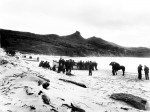 A day after its departure, the ship struck the shoals near the coast of Taranaki and was damaged but seemed to be capable of limping its way to Auckland. It was not. The Ventnor took on water and sank on October 29th. The crew and a half-dozen Chinese passengers tending to the remains managed to scramble onto four life boats. One of the four capsized killing all 13 people on board, including the captain and third officer.
A day after its departure, the ship struck the shoals near the coast of Taranaki and was damaged but seemed to be capable of limping its way to Auckland. It was not. The Ventnor took on water and sank on October 29th. The crew and a half-dozen Chinese passengers tending to the remains managed to scramble onto four life boats. One of the four capsized killing all 13 people on board, including the captain and third officer.
The tragedy caused great distress in the Chinese community of New Zealand and in Guangdong. Choie Sew Hoy’s family offered a reward of $25,000 for the recovery of his remains, but the heavy coffins held in the cargo of the ship could not be retrieved. The Tong hired another steamer that searched for remains without success. A few coffins stored on deck did float ashore where the remains were buried with respect by the Maori of the Te Roroa and Te Rarawa tribes.
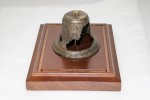 While the general area of the wreck was known, the precise location of the ship wasn’t discovered until 110 years after it sank. The Ventnor Project Group (VPG) found the wreck 15 kilometers (nine miles) off the Hokianga Coast with sonar in 2012 and later divers confirmed its identity. In April of 2014, divers returned to the wreck and recovered a few artifacts: a ceramic plate, the ship’s bell, a lamp holder, a porthole and the ship’s telegraph. At the time, the organization thought the artifacts could be given to a museum in Guangzhou, but the New Zealand Chinese Association (NZCA) was vocally opposed to the idea because of how significant they were to the Chinese community in New Zealand.
While the general area of the wreck was known, the precise location of the ship wasn’t discovered until 110 years after it sank. The Ventnor Project Group (VPG) found the wreck 15 kilometers (nine miles) off the Hokianga Coast with sonar in 2012 and later divers confirmed its identity. In April of 2014, divers returned to the wreck and recovered a few artifacts: a ceramic plate, the ship’s bell, a lamp holder, a porthole and the ship’s telegraph. At the time, the organization thought the artifacts could be given to a museum in Guangzhou, but the New Zealand Chinese Association (NZCA) was vocally opposed to the idea because of how significant they were to the Chinese community in New Zealand.
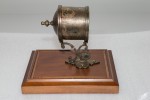 The NZCA was also concerned that the wreck site was in danger from looters, so it worked with New Zealand Heritage to fast-track protection of the site. All sites from before 1900 are automatically accorded protected status, but the Ventnor was just outside that dividing line. New Zealand Heritage quickly gazetted the site, protecting it under the provisions of the Historic Places Act 1993, making it illegal for anyone to interfere with the wreck in any way.
The NZCA was also concerned that the wreck site was in danger from looters, so it worked with New Zealand Heritage to fast-track protection of the site. All sites from before 1900 are automatically accorded protected status, but the Ventnor was just outside that dividing line. New Zealand Heritage quickly gazetted the site, protecting it under the provisions of the Historic Places Act 1993, making it illegal for anyone to interfere with the wreck in any way.
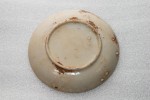 Now the question is what to do with the artifacts removed from the shipwreck before it was protected. On Monday New Zealand’s Ministry of Culture and Heritage published a notice on their website and in newspapers asking that claims of ownership be submitted to the ministry.
Now the question is what to do with the artifacts removed from the shipwreck before it was protected. On Monday New Zealand’s Ministry of Culture and Heritage published a notice on their website and in newspapers asking that claims of ownership be submitted to the ministry.
New Zealand’s Ministry for Culture and Heritage invites submissions of claims for ownership and/or possession from parties who may have an interest in some or all of the objects. We also invite submissions from parties who are not claiming ownership and/or possession but who wish to make submissions for consideration regarding the future care of the objects whether by them or by another party. Submissions should be received by the Ministry for Culture and Heritage by 23 November 2015.
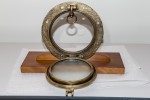 It seems to me that the only people with a legitimate ownership claim to pieces of the Ventnor would be the owners of the ship, but as far as I could find, the Glasgow-based shipping company is no longer in business. Perhaps it has legal corporate descendants. Even so, I doubt they’d want to take an old porthole out of the context where it has such profound meaning. The NZCA plans to make a submission to the ministry with the goal of creating a traveling exhibition. The government reserves the right to make a claim as well. Once the claims have been submitted and the deadline expires, the Chief Executive of the Ministry for Culture and Heritage will decide who gets custody of the artifacts.
It seems to me that the only people with a legitimate ownership claim to pieces of the Ventnor would be the owners of the ship, but as far as I could find, the Glasgow-based shipping company is no longer in business. Perhaps it has legal corporate descendants. Even so, I doubt they’d want to take an old porthole out of the context where it has such profound meaning. The NZCA plans to make a submission to the ministry with the goal of creating a traveling exhibition. The government reserves the right to make a claim as well. Once the claims have been submitted and the deadline expires, the Chief Executive of the Ministry for Culture and Heritage will decide who gets custody of the artifacts.